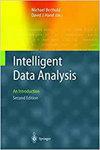深度迁移学习方法在磁共振图像脑肿瘤检测与分类中的性能分析
IF 0.8
4区 计算机科学
Q4 COMPUTER SCIENCE, ARTIFICIAL INTELLIGENCE
引用次数: 0
摘要
中枢神经系统(CNS)是人体最重要的部分之一。脑肿瘤是影响中枢神经系统的最致命的疾病之一,应该及早发现,以避免严重的健康影响。由于它是最危险的癌症类型之一,其诊断是医疗保健部门的关键部分。脑肿瘤可以是恶性的,也可以是良性的,对放射科医生来说,肿瘤的分级识别是一项繁琐的工作。在最近的过去,研究人员提出了各种自动检测和分类技术,使用不同的成像模式,重点是提高准确性。在本文中,我们深入研究了19种不同的训练深度学习模型,如Alexnet, VGGnet, DarkNet, DenseNet, ResNet, InceptionNet, ShuffleNet, NasNet及其变体,用于使用深度迁移学习检测脑肿瘤。性能参数表明,NASNet-Large的检测准确率为98.03%,分类准确率为97.87%。如果检测到的输出不是正常的,则使用阈值分割算法分割出肿瘤区域。本文章由计算机程序翻译,如有差异,请以英文原文为准。
Performance analysis of deep transfer learning approaches in detecting and classifying brain tumor from magnetic resonance images
The Central Nervous System (CNS) is one of the most crucial parts of the human body. Brain tumor is one of the deadliest diseases that affect CNS and they should be detected earlier to avoid serious health implications. As it is one of the most dangerous types of cancer, its diagnosis is a crucial part of the healthcare sector. A brain tumor can be malignant or benign and its grade recognition is a tedious task for the radiologist. In the recent past, researchers have proposed various automatic detection and classification techniques that use different imaging modalities focusing on increased accuracy. In this paper, we have done an in-depth study of 19 different trained deep learning models like Alexnet, VGGnet, DarkNet, DenseNet, ResNet, InceptionNet, ShuffleNet, NasNet and their variants for the detection of brain tumors using deep transfer learning. The performance parameters show that NASNet-Large is outperforming others with an accuracy of 98.03% for detection and 97.87% for classification. The thresholding algorithm is used for segmenting out the tumor region if the detected output is other than normal.
求助全文
通过发布文献求助,成功后即可免费获取论文全文。
去求助
来源期刊

Intelligent Data Analysis
工程技术-计算机:人工智能
CiteScore
2.20
自引率
5.90%
发文量
85
审稿时长
3.3 months
期刊介绍:
Intelligent Data Analysis provides a forum for the examination of issues related to the research and applications of Artificial Intelligence techniques in data analysis across a variety of disciplines. These techniques include (but are not limited to): all areas of data visualization, data pre-processing (fusion, editing, transformation, filtering, sampling), data engineering, database mining techniques, tools and applications, use of domain knowledge in data analysis, big data applications, evolutionary algorithms, machine learning, neural nets, fuzzy logic, statistical pattern recognition, knowledge filtering, and post-processing. In particular, papers are preferred that discuss development of new AI related data analysis architectures, methodologies, and techniques and their applications to various domains.
 求助内容:
求助内容: 应助结果提醒方式:
应助结果提醒方式:


